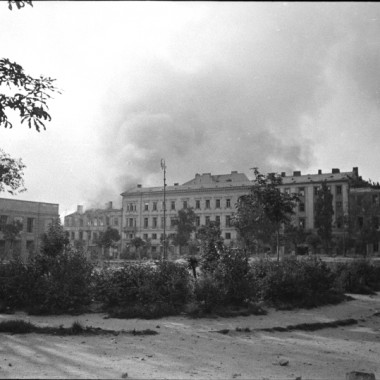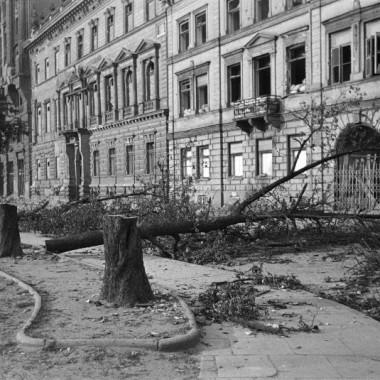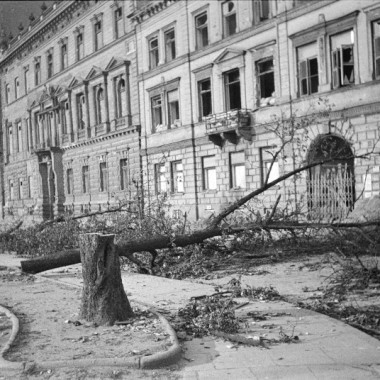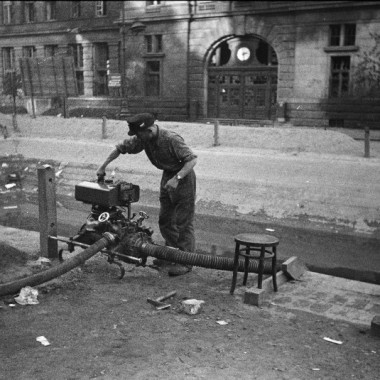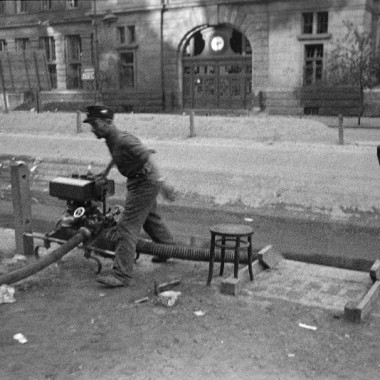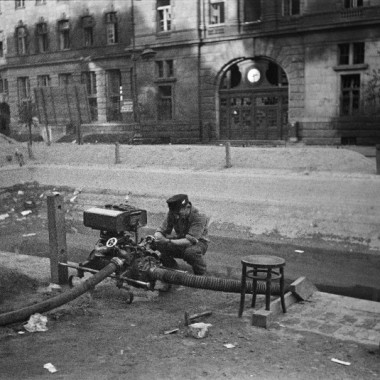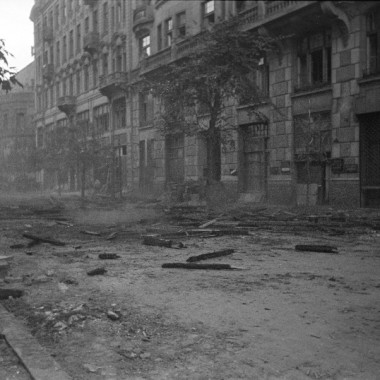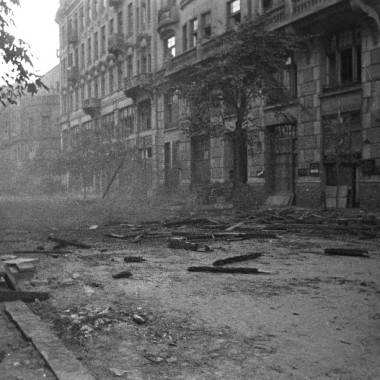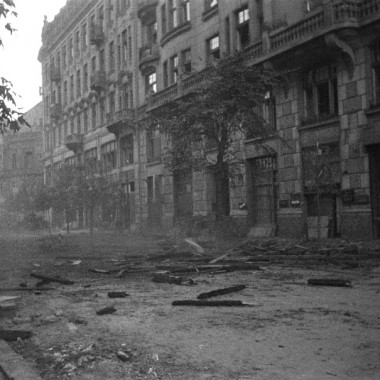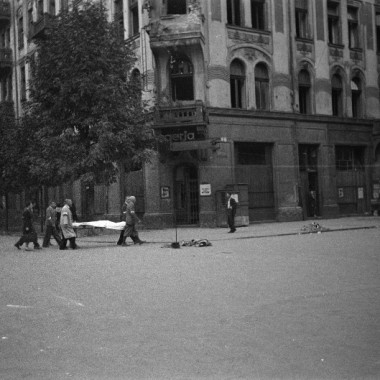Lt. Joachim Joachimczyk “Joachim” was born on 16 May 1914 in Swornegacie, Kashubia (northern Poland). In 1938, he completed military training at a reserve infantry cadet training course. In September 1939, he fought in the 16th Pomeranian Infantry Division in the Świętokrzyskie Mountains region. He spent the occupation in Warsaw. In 1942, he was trained in photography by the Photographic Section of the Bureau of Information and Propaganda (BIP) of the Home Army Headquarters (KG AK). During the Rising, he photographed the City Center, Powiśleand Czerników districts as Military Press Reporter (PSW) “Joachim”. He reported directly to 2Lt. Stanislaw Olkusznik “Śmiałowski”, the head of the BIP’s information and film section. Interned in Stalag X B in Sandbostel after the capitulation of the Rising, he escaped from a subsequent transfer and returned to Gdynia in November 1944, where he joined an underground Scouting organization named “Tajny Hufiec Harcerzy” (THH). They planned and conducted two intelligence operations codenamed ”B-1” and ”B-2”. Operation “B-1” involved stealing the plans of the German Navy base in Gdynia and transferring them to the Royal Air Force. The RAF bombed the base on 18-19 December 1944, destroying several vessels, including battleship “Schleswig-Holstein” whose artillery bombardment of the Polish Westerplatte outpost in Gdańsk on 1 September 1939 came to be known as the symbolic start of World War II. Operation “B-2” resulted in providing the Red Army with the plans of the German defence of Gdynia, which facilitated the crushing of the German resistance in the city in March 1945. After the war, Joachim Joachimczyk made a university degree in economy and worked as a teacher and headmaster of the Chemical Schools Complex in Gdynia-Cisowa. The identity of PSW “Joachim” remained unknown for many years. He was recognized only in 1979 by Profesor Władysław Jewsiewicki, a film historian and expert in photographic footage of the Rising. Joachim Joachimczyk died on 4 May 1981 in Gdańsk. In 1984, his photos from the Rising were presented at an exhibition in the Royal Castle in Warsaw.
Joachimczyk took his first photos of the Rising at Napoleon Square on 3 August. His photographic walks took him up and down the districts of City Centre, Powiśle and Czerniaków. One of his most interesting reportage presents German POWs from the PAST building captured by the insurgents on 20 August, and insurgents emerging from the sewers at Warecka Street after the fall of the Old Town on 1 September. He also photographed everyday civilian life in the city engulfed in fighting, and scanty celebrations held by the insurgents. Several photos show his wife Maria, a courier for the Government Delegation for Poland. Joachimczyk recorded his footage of the Rising with Kodak and Leica photo cameras, and a film camera. In the course of his work, he would give the exposed negatives to 2Lt. “Śmiałowski’, who would in return provide him with new films and, on occasion, some prints of the more interesting shots. Only the negatives from the Leica camera, taken mainly in August 1944, survived. The photos taken with the Kodak camera, including ones from the transit camp in Ożarów and his subsequent transport to a POW camp, were lost. They were discovered in the Stalag by a Wehrmacht solider, who committed to send them back to Poland. Unfortunately, they never arrived to the addressee. All other photographs, buried under the rubble of the destroyed building of the Queen Jadwiga Middle School and hidden in the cellar of Ronikier’s house at Aleja Róż Street, have never been found.





